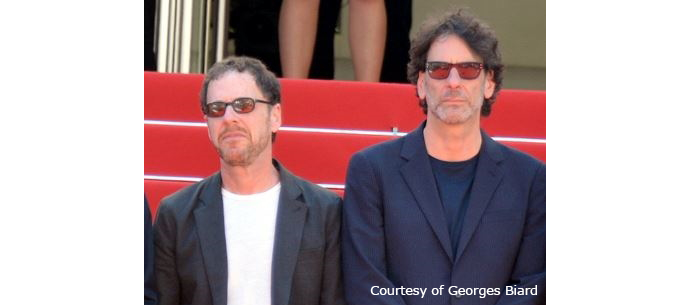Welcome to Cinematic Essence, where I critique both contemporary and classic films and discuss how they utilize narrative, mise-en-scène and other filmmaking elements to facilitate unique experiences. I avoid spoilers when I discuss recent films.
18 years after the release of “O Brother, Where Art Thou?” — the Depression-era retelling of Homer’s “Odyssey” — Tim Blake Nelson has reunited with the Coen Brothers in their first Netflix original, “The Ballad of Buster Scruggs.” The film also stars Clancy Brown, Liam Neeson, James Franco, Zoe Kazan, Tom Waits, Brendan Gleeson and numerous other talented actors.
Nelson plays the film’s namesake, a chipper, singing-cowboy with a deadly aim. For about 17 minutes the plot follows his gun-slinging adventures in bars and saloons. The film then shifts to another story, and then to another, and ultimately tells six Westerns, each with its own distinct style — or as Nelson puts it on the ABC television program, “Popcorn with Peter Travers”, “[the film is] about mortality told in six different subgenres of the western genre.”
I had an unusual reaction to “The Ballad of Buster Scruggs.” Typically, I can roughly determine how much I enjoy a film before I reach its halfway point. However, this anthology varies so wildly in tone that I consciously reconsidered my stance each time a new vignette rolled around. Initially, I felt concerned. Although Buster Scruggs is an interesting character,and a successful parody of the traditional Western hero, I found some of his antics dizzying and the end of his story rather silly. I did not, however, dislike the first story. Its silliness is, in fact, sometimes charming and morbidly funny, but I dreaded the prospect of sitting through two hours and 13 minutes of that first story’s tiresome tone. Fortunately, the second story was more serious. Although still funny, it makes comedy out of death in a more digestible manner.
The third story is where the film becomes truly great. It depicts the travels of an armless, legless performer and his seemingly benevolent but ultimately opportunistic manager. This tale is so harrowing that it is at times difficult to watch. Its visual style is different from that of the first two stories. Instead of adopting a conventional Western aesthetic, the third story is clad in green and blue filters — a choice that is suitable to this tale’s mood. In fact, the visual aesthetic of each story greatly depends on some very noticeable filters, but the filters never look jarring or distracting. They are instead always appropriate to each story’s tone and setting, and they sometimes host a suitably hyper-real ambiance. In other words, I never felt like I was watching a video that was filtered on Instagram.
The fourth tale is the simplest and most hopeful one. It follows an old gold-digger’s struggle to find gold along a riverfront. I believe that if I saw this short film individually, I would be far from astonished. Nevertheless, I found it to be a necessary breather, placed in the most fitting point in the film. The fifth story chronicles a caravan’s trip across the desert, and it initially seems like a relatively standard romance. However, as the narrative progressed, I found myself increasingly invested in its three main characters. When tragedy inevitably struck, it affected me more emotionally than any other story.
The sixth and final story is difficult to judge because it is barely a story at all. Instead, it solely contains meditative discourse among a group of Western archetypes with diverse perspectives, and its exploration of the human condition and of our innate need for storytelling is the only thing that ties this beautifully uneven film together. My only complaint — and it is a small one — is that this story’s grand metaphor is a bit too obvious, too early.
“The Ballad of Buster Scruggs” contains neither the philosophical heft of “No Country for Old Men,” nor the grooviness of “The Big Lebowski.” Nonetheless, fans of Ethan and Joel Coen’s filmography would surely enjoy a return to these writer-directors’ cynical, strange, and humorous world.
Christoforos Sassaris is a third-year student majoring in English with minors in computer science and creative writing. PS868710@wcupa.edu

